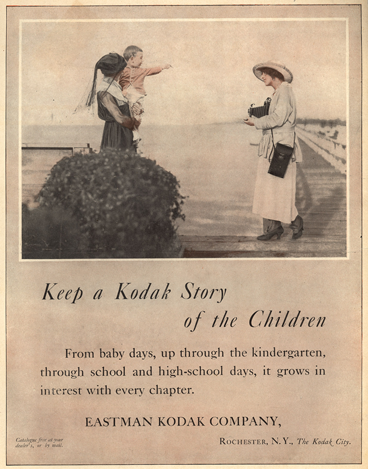"Ok Glass, Build a Social Network"
Why you’ll want everyone you know to wear Google Glass.

Google Glass has sparked a passionate debate about privacy and the role that technology should play in our lives. This public resistance is certainly not futile: the success or failure of Glass depends on whether it can alleviate these concerns and/or provide enough value to offset them. The debate has focused on the camera and, to a lesser extent, the microphone; it’s difficult for people near the Glass wearer to know if they’re being recorded. Frog Design researcher Jan Chipchase describes a possible consequence of this uncertainty:
It will be interesting to see whether Glass is perceived as a threatening object and thus may force others in proximity of a wearer to maintain a hyper-awareness of the wearer and their own actions in places — whereas today, they are currently able to relax. This would be, in effect, like a blanket tax on the collective attention of society1.
Due to this attention tax, people might prefer that those around them not be wearing Glass. Many of the advertised features of Glass are utility apps (such as weather forecasts, email previews, and driving directions with traffic reports), but non-wearers who prefer not to be recorded are indifferent, at best, to the wearer’s convenience. The keys to the success of Glass, then, are applications that are useful not only to the wearer, but also to other people without Glass2. Specifically, non-wearers could derive value from Glass applications for photo sharing, optionally synchronous messaging, and telepresence.
While the camera is certainly the most troublesome aspect of Glass3, it also has the potential to provide the most value to non-wearers. The public reaction to Glass is reminiscent of the extreme distaste for amateur photographers that arose in the late nineteenth century. How did society transition from one in which these photographers were derided for privacy violations, to one in which everyone has a camera in their pocket?
Cameras became ubiquitous because people value the images they produce. It was critical both that people enjoyed using cameras to create the images, and that other people enjoyed viewing the images later. Imagine, for a moment, a birthday party in the early days of point-and-shoot cameras: everyone wants to have a friend with a camera to document the celebration4, and as a result everyone wants to buy a camera and be that friend.
Improvements in both capture technology (Daguerreotypes, film, digital sensors, etc.) as well as hardware form-factor (medium-format cameras, SLRs, mobile phones, etc.) have made photography faster and easier. The Glass camera is available at a moment’s notice with a touch or voice command5, which makes it easier for the wearer to document social events, so non-wearers can enjoy more photos than would have otherwise been taken. Wearing is sharing is caring.
These behaviors outline a possible social network focused on image sharing, but more can be done with Glass to both benefit those nearby and differentiate from existing services such as Facebook, Twitter, and Google+. Google+, specifically, is primarily used as a platform for public and community broadcasting, and feels like it was designed to resemble Facebook so that it could compete with Facebook. The service that replaces Facebook, however, will not look like Facebook, and Glass will suffer if integrated too tightly with Google+’s broken social graph.
Google should not force Glass to be yet-another stage for performative broadcasting, but should rather develop it as a novel device for directed, private communication. The Glass hardware is uniquely suited for having conversations in the moment with people far away using text, image, audio, and video messages:
Google knows this, as was apparent in the early promotional video above, yet the potential is much broader than simple video calls and photo broadcasts to social networks. Dustin Curtis points out that applications have recently begun to use images for communication, rather than artistic expression on Instagram or documentation on Facebook. A single photo can carry a large amount of information, and can tell the viewer “where someone is, what time it is, who they are with, and much more.” The popularity of Snapchat’s ephemeral, exploding content illustrates the communicative power of images, and the first-person perspective inherent to Glass6, as well as the low-friction capture process, are perfect for this use case. The friends and family of Glass wearers can enjoy this unique and personal communicative content even if they don’t have Glass themselves7.
The opportunity for new communication tools is larger, however, than incrementally-improved versions of apps we have today. The Glass hardware is well-suited for optionally synchronous conversations with individuals and groups who are far away. Optionally synchronous conversations are somewhere between the synchronicity of a phone call and the asynchronicity of email, and a good example is desktop instant messaging on AIM or Gchat. These services are great for talking with friends while watching television or with coworkers whom you don’t want to interrupt, and recipients can respond at their leisure with only an expectation of timeliness.
Glass will allow its wearers to integrate these conversations into many new contexts, and these conversations will benefit both wearers and non-wearers. The activities featured in the ‘How It Feels’ promotional video look too engrossing for the wearers to be engaged in a fully synchronous conversation with someone somewhere else, and optionally synchronous conversations are ideal for sharing these experiences with people elsewhere while staying present in the moment. Current mobile devices get cluttered with notifications, but the Glass wearer can engage in a conversation without seeing notifications from other apps, just as a landline telephone user can make a call without checking her voicemail.
There is also an interesting use case for synchronous conversations in situations where two or more Glass wearers are together in one place and have mutual friends or coworkers somewhere else. Current video conferencing tools require that users stay in front of a stationary screen with a camera (Google Hangouts, Skype), hold a mobile device in their hands (Apple Facetime), or sit in a fancy telepresence room like this:
As an alternative, imagine two Glass wearers are seated across from each other in a restaurant, and a mutual friend in a faraway city would like to join them from her computer. The Glass wearers can maintain eye contact, and the third friend can see each through the other’s camera. If something else captures their interest, then they’ll naturally turn toward it, and the third friend will automatically follow their gaze. The video from the third friend’s camera would also always be in the field of view of the Glass wearers, rather than off to the side on a screen. Furthermore, audio quality would improve because the Glass microphone is built-in, rather than resting on a conference table. Glass will enable casual, go-anywhere telepresence that helps both wearers and non-wearers feel like they’re with friends who are far away.
Social applications for Glass that focus on photo sharing, optionally synchronous messaging, and telepresence can all benefit non-wearers and balance concerns about privacy and the attention tax. The near-term8 success of Glass hinges on whether other people want their friends to be wearing it, regardless of whether or not they have Glass themselves. Concerns about privacy and attention can be overcome by social apps that bring people closer together, and Glass has an exciting future as a communication device9.
-
Other emerging technologies will levy this same tax, and that there’s an upper limit to how much attention is required in total. Security systems, autonomous delivery drones, and even gaming consoles will all have increasingly networked cameras, so perhaps we’ll just assume everything is always being recorded. While that future certainly seems bleak, at least Glass wouldn’t have an additional adverse effect.↩
-
This requisite benefit to non-wearers is distinct from network effects between Glass wearers: while there will certainly be applications that cause Glass to be more useful as more people have it (as with fax machines and Facebook), the network will be unable to reach critical mass in the face of negative public opinion.↩
-
Another concern is the prominence of the display: it is both on your own face, and in the face of everyone else. People are very adept, however, at knowing where other people are looking, and I suspect that a glance up-and-to-the-right at Glass will be just as obvious, and just as rude, as a Glance down at an iPhone. Even more conspicuously, Glass wearers will need to touch or speak to the device to use it, which will be obvious during face-to-face conversations.↩
-
Some people, of course, don’t enjoy looking at photos and don’t like to have their picture taken. While they would be nonplussed by Glass as an evolution of previous cameras, they might still be interested in the potential of Glass as a communication device.↩
-
While there are certain stigmas around talking to our devices in public, these voice interfaces have the benefit of being transparent: if I say “ok glass, take a picture,” then everyone around me knows that I just took a picture. Glass will make those adjacent to the wearer more comfortable by requiring that users verbally broadcast their usage of the device. In addition, voice interfaces can be used by others. This is often portrayed as a humorous weakness of Glass, since a non-wearer might say, “ok glass, google for photos of [something obscene],” but social norms can easily regulate such behavior.↩
-
Given the popularity of the selfie, how long will it be until the press conference announcing Google Hand Mirror?↩
-
I have plans to build app along these lines with the Mirror API (as opposed to the undocumented and unsupported “sideloading” Android API). I’ll post more details when I have something working!↩
-
There are many questions about the long-term consequences of Glass:
- Will every surface be covered in digital advertising? Maybe, if we’re compensated well enough for viewing them. Also, perhaps there is an advertising equilibrium, where the world is so saturated with advertising that, given fixed disposable income, it’s no longer worth it for companies to purchase more of our attention.
- Will Google use Glass to collect ambient personal data against our wishes, and then make it accessible to those whom we’d rather not have it? Mark Hursts’s post on this topic raises interesting questions, but the technology isn’t there yet.
- Will Google engineers control our thoughts? Anything is possible given enough time, but this seems way too far away to worry about, and I’m sure there would be safeguards against true “Glassholes” (to put it kindly) like the one in the film.
-
I’ve been invited to the Glass Explorers program, and I’m scheduled to pick up my device tomorrow. My three #ifihadglass applications are here, here, and here. I’ve thought a lot about whether the $1,500 price tag is worth it, but Glass represents a future worth exploring, and I’m excited about the opportunities. As @amybijamy said on Twitter, “It’s like getting into Hogwarts!”↩
Thanks to @kvanscha, @ninakix, @6a68 and @jorgeo for their help with this post!


